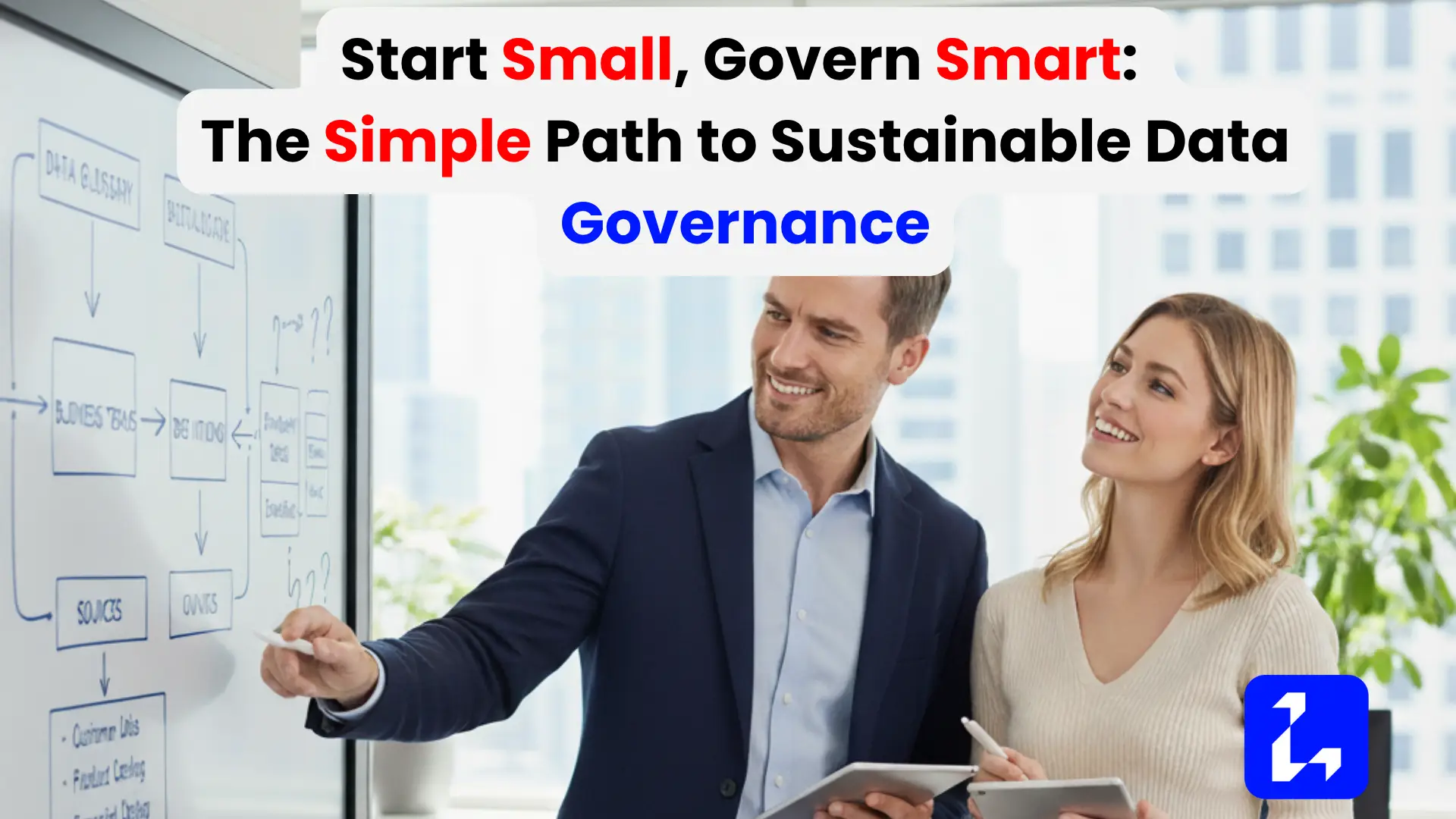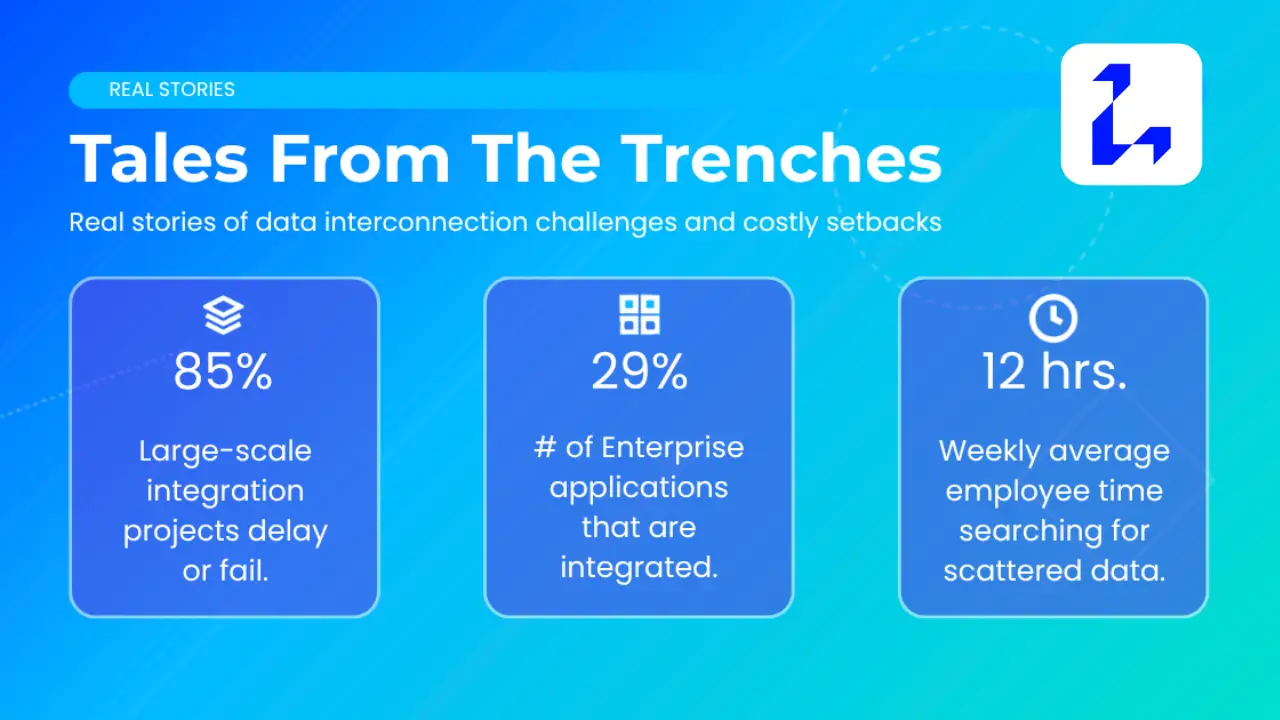When Agility Outpaces Accountability
Every minute, another Software-as-a-Service (SaaS) application goes live inside an enterprise.
Business units demand agility, IT organizations scramble to enable speed, and vendors deliver turnkey cloud solutions with frictionless onboarding. The result? A sprawling, dynamic SaaS portfolio that evolves faster than the organization’s ability to govern it.
The global Software-as-a-Service (SaaS) market—valued at approximately US $266 billion in 2024—is projected to reach US $1.13 trillion by 2032, growing at nearly 20% CAGR (Compound Annual Growth Rate) (Fortune Business Insights, 2024). Meanwhile, data-governance maturity has not kept pace. Without control over how SaaS applications handle enterprise data, many organizations risk losing visibility, regulatory compliance, and ultimately, stakeholder trust.
For executives and directors responsible for technology adoption, risk management, and governance, SaaS has shifted from an IT procurement topic to a strategic board-level concern.
Why SaaS Growth Amplifies Governance Imperatives
1. Rapid Proliferation of SaaS
Nearly 95% of organizations have implemented at least one SaaS solution (DemandSage, 2025). Large enterprises now average 125–200 active SaaS apps, often purchased and deployed outside formal IT oversight. Each app introduces new data flows, storage locations, and vendor dependencies that must be governed.
2. Data Beyond Organizational Borders
Traditional data-governance programs focused on on-premises databases and internal analytics platforms. But SaaS shifts that model—data now moves through multi-tenant clouds, third-party APIs, and integrations managed by vendors, not by enterprise IT. Without visibility into where your data resides and how it flows, governance becomes fragmented.
3. Regulatory Pressure Intensifies
Global privacy regulations such as the General Data Protection Regulation (GDPR), California Consumer Privacy Act (CCPA), and Digital Charter Implementation Act (Canada) hold enterprises accountable for how vendors process their data. If your SaaS providers fail to comply, you remain liable (Nudge Security, 2024).
4. Third-Party and Vendor Risk Expands
Each SaaS contract creates a new data-processing relationship. Vendor security posture, compliance maturity, breach response, and contractual terms all become extensions of your own governance footprint. Without standardized vetting, hidden risks multiply.
5. Operational Complexity and Cost
SaaS renewals are often business-unit driven. Lack of centralized oversight leads to redundant purchases, inconsistent configurations, and poor data-management practices—undermining efficiency and inflating spend.
The 10 Core Challenges of SaaS Data Governance
Executives must recognize the full scope of governance challenges SaaS introduces.
- Shadow IT & App Sprawl – Business units adopt unsanctioned tools without IT or security review, creating uncontrolled data exposure.
- Incomplete Data Inventory – Many SaaS tools are missing from enterprise data catalogs, preventing effective monitoring or classification.
- Data-Lineage Blind Spots – Without visibility into data origins and transformations, audit trails are incomplete.
- Identity and Access Fragmentation – Disconnected authentication models lead to inconsistent policy enforcement and excess privilege.
- Vendor Security Variability – Inconsistent vendor maturity leads to uneven control environments.
- Data Retention and Disposal Gaps – SaaS data often persists indefinitely, breaching corporate retention standards.
- Cross-Border Data Risks – Data may reside in multiple jurisdictions, complicating sovereignty compliance.
- Integration and API Complexity – Each API connection increases governance surface area and potential vulnerability.
- Talent and Accountability Deficits – Gartner identifies unclear ownership and lack of dedicated governance roles as a top impediment (Gartner, 2024).
- Financial Oversight Weakness – Redundant contracts and renewals without governance review waste resources and create unmanaged exposure.
These issues compound quickly when governance frameworks are reactive rather than proactive.
A Practical Framework for SaaS-Enabled Data Governance
A structured approach transforms governance from a compliance burden into a strategic advantage. Below is a framework that integrates SaaS oversight into enterprise governance maturity.
1. Governance Principles and Scope
Define the enterprise philosophy for SaaS data management. Establish guiding principles such as:
- “All SaaS applications must support enterprise identity management.”
- “Data residency and exportability must be transparent.”
- “Ownership for data quality and lifecycle remains internal.”
Document scope—covering all SaaS tools that process, store, or transmit corporate data.
2. Roles and Responsibilities
Create a governance council led by executive sponsors (CIO, CDO, CISO) and supported by data stewards, application owners, and vendor-management leads. Assign clear accountability for:
- Application onboarding and retirement
- Data-quality management
- Vendor-risk assessment
- Compliance and audit readiness
3. Data and Application Inventory
Compile an authoritative inventory of all SaaS tools. Include:
- Business owner
- Data classification (public, internal, confidential, regulated)
- Integration points and data flows
- Vendor details and risk tier
- Renewal and contract information
Use automated discovery tools where possible to detect “shadow” SaaS activity.
4. Data Classification and Mapping
For each SaaS app, map data lifecycle stages: creation, transmission, storage, access, sharing, archival, and deletion. This visibility supports risk scoring, compliance tracking, and breach-response readiness.
5. Identity and Access Controls
Integrate SaaS authentication with enterprise Identity And Access Management (IAM). Apply least-privilege principles, multifactor authentication, and quarterly access reviews. When integration is impossible, require vendor justification and compensating controls.
6. Vendor and Third-Party Risk Management
Evaluate vendors across standardized criteria:
- Security certifications (SOC 2, ISO 27001)
- Privacy compliance (GDPR/CCPA readiness)
- Data-residency transparency
- Breach history and incident response maturity
- Right-to-audit and data-return clauses
7. Data Quality, Retention, and Lifecycle
Define data-quality standards applicable to SaaS sources. Establish rules for retention, archival, and secure deletion consistent with enterprise policy. Confirm vendor capability to support these rules.
8. Monitoring, Audit, and Reporting
Develop a unified dashboard of SaaS usage, risk ratings, contract renewals, and compliance indicators. Use alerts for anomalies such as unapproved integrations, excessive access, or expired audits.
9. Training and Culture
Promote data-governance literacy across business units. Provide onboarding modules explaining roles, responsibilities, and SaaS-specific risks.
10. Continuous Review and Improvement
Governance is iterative. Review quarterly, measure performance (e.g., % of SaaS applications inventoried, % integrated with IAM, # of vendor audits completed), and refine controls accordingly.
Step-by-Step Implementation Roadmap
- Executive Sponsorship – Secure visible C-suite backing to position governance as a business enabler, not a constraint.
- Steering Committee Formation – Include IT, data, security, procurement, and business leaders.
- Quick-Win Inventory – Identify the top 20 SaaS applications by spend, sensitivity, or business impact.
- Data-Flow Mapping – Document how data enters, moves through, and exits each high-risk SaaS platform.
- Risk Scoring and Prioritization – Evaluate using a standardized rubric (data sensitivity × access risk × vendor maturity).
- Policy and Standards Definition – Embed SaaS requirements into enterprise data-governance policy and procurement workflows.
- Vetting Process Implementation – Mandate review before new SaaS procurement (see below).
- Monitoring & Controls Deployment – Launch dashboards, integrate with IAM, establish alerts for anomalies.
- Training Rollout – Deliver concise, role-based education on SaaS governance practices.
- Continuous Audit and Improvement – Reassess risks quarterly and update controls.
Vetting Process for SaaS Adoption
Before committing to any new SaaS investment, apply this eight-step vetting procedure:
- Business Justification
- Define the business outcome and data categories involved.
- Identify stakeholders and scale of adoption.
- Data Impact Assessment
- Determine sensitivity and regulatory classification of data.
- Assess storage location and cross-border transfer implications.
- Security and Compliance Evaluation
- Review audit certifications (SOC 2, ISO 27001).
- Examine breach history, encryption, backup, and DR posture (Nudge Security, 2024).
- Identity and Access Integration
- Confirm single sign-on compatibility and RBAC support.
- Ensure de-provisioning and audit-logging capabilities.
- Data Integration and Exit Strategy
- Review export options, formats, and vendor-lock-in risks.
- Require explicit data-return and deletion terms.
- Contractual Governance
- Include right-to-audit, breach-notification, and termination clauses.
- Specify data-ownership and liability provisions.
- Risk Rating and Decision Gate
- Use enterprise rubric to assign risk tier.
- Escalate high-risk apps to the governance council for approval.
- Implementation & Post-Adoption Review
- Assign data owner, steward, and vendor manager.
- Re-evaluate risk after 90 days of operation.
Why Strong SaaS Governance Creates Competitive Advantage
Organizations that embed SaaS governance achieve:
- Trusted data for analytics and decision-making through verified lineage and quality.
- Regulatory assurance, minimizing exposure to compliance penalties.
- Cost control, eliminating redundant applications and optimizing renewals.
- Operational agility, enabling safe innovation within defined guardrails.
- Enhanced resilience, with visibility across vendor ecosystems and integrations.
Gartner (2024) predicts that by 2026, organizations treating data governance as a core business capability—not merely a compliance function—will outperform peers on digital-trust metrics by 40%. Governance is therefore not just about control; it’s about enabling scalable innovation with confidence.
Conclusion and Call to Action
SaaS is no longer an optional convenience—it’s the backbone of modern enterprise operations. But unmanaged SaaS means ungoverned data, inconsistent compliance, and uncontrolled risk.
Executives who act now to integrate SaaS into enterprise data-governance frameworks will lead organizations that innovate responsibly, operate transparently, and scale sustainably.
Take the first step today: review your SaaS portfolio, identify governance gaps, and embed a vetting process before your next procurement cycle.
Need help? Locadium helps organizations turn SaaS complexity into clarity—building data governance frameworks that protect compliance, enhance visibility, and unlock real business value.
References
DemandSage. (2025). SaaS statistics: Usage, market share, and trends. Retrieved from https://www.demandsage.com/saas-statistics/
Fortune Business Insights. (2024). Software-as-a-Service (SaaS) market report 2024–2032. Retrieved from https://www.fortunebusinessinsights.com/software-as-a-service-saas-market-102222
Gartner. (2024). Data governance frameworks and challenges. Retrieved from https://www.gartner.com
Nudge Security. (2024). Data governance in the age of SaaS sprawl. Retrieved from https://www.nudgesecurity.com/post/data-governance






